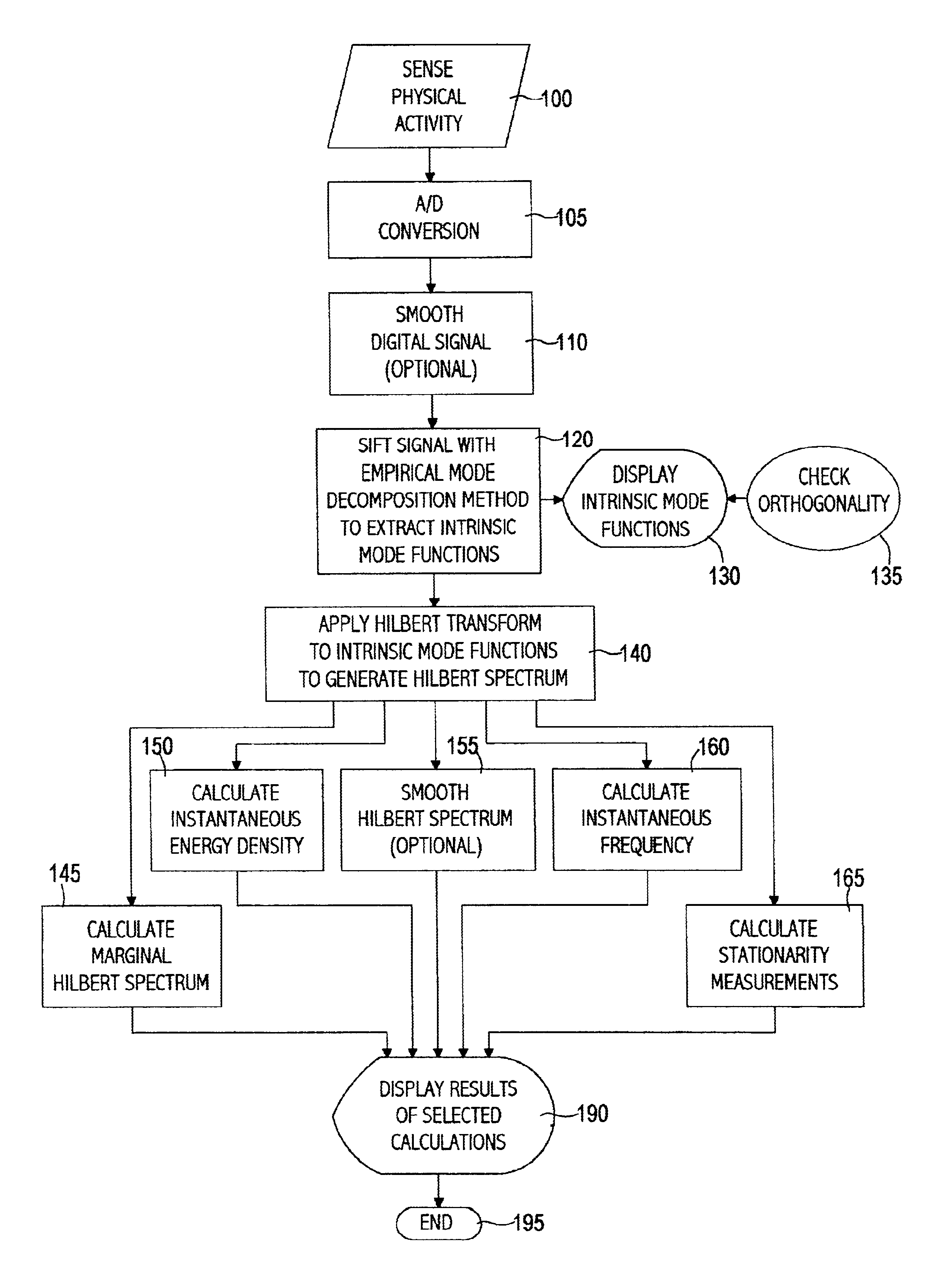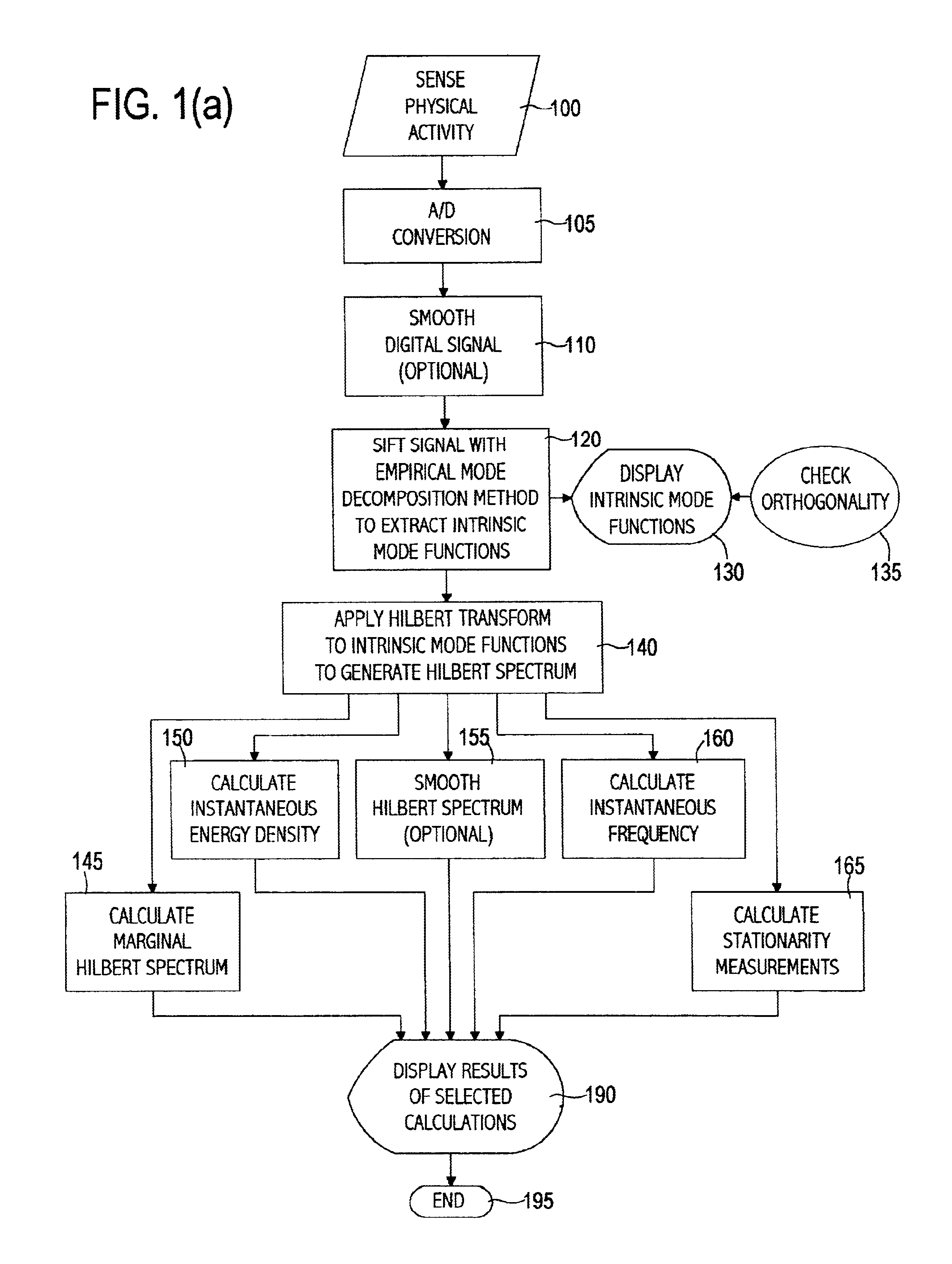Empirical mode decomposition for analyzing acoustical signals
a signal and empirical mode technology, applied in the field ofsignal analysis methods, can solve the problems of not yielding physical meaningful results, previous methods have not yielded results which are physically meaningful, and represent physical processes with physical signals may present one or mor
- Summary
- Abstract
- Description
- Claims
- Application Information
AI Technical Summary
Benefits of technology
Problems solved by technology
Method used
Image
Examples
Embodiment Construction
Before describing the computer implemented Empirical Mode Decomposition method in detail and its application to biological data and acoustical data, the definition and physical meaning of intrinsic mode functions in general will be discussed.
Intrinsic Mode Function
An Intrinsic Mode Function (IMF) is a function that satisfies the following two conditions:(a) in the whole data set, the number of extrema and the number of zero-crossings must either be equal or differ at most by one, and(b) at any point, the mean value of upper envelope defined by the maxima and the lower envelope defined by the minima is zero.
The first condition shares some similarity to the traditional narrow band requirements for a stationary Gaussian process. The second condition is a totally new idea. Conceptually, the second condition modifies the classical global requirement to a local one. Furthermore, the second condition has the desirable result that the instantaneous frequency will not have unwanted fluctuati...
PUM
 Login to View More
Login to View More Abstract
Description
Claims
Application Information
 Login to View More
Login to View More - R&D
- Intellectual Property
- Life Sciences
- Materials
- Tech Scout
- Unparalleled Data Quality
- Higher Quality Content
- 60% Fewer Hallucinations
Browse by: Latest US Patents, China's latest patents, Technical Efficacy Thesaurus, Application Domain, Technology Topic, Popular Technical Reports.
© 2025 PatSnap. All rights reserved.Legal|Privacy policy|Modern Slavery Act Transparency Statement|Sitemap|About US| Contact US: help@patsnap.com



